
Copernical Team
NASA's Perseverance captures dust-filled Martian whirlwind
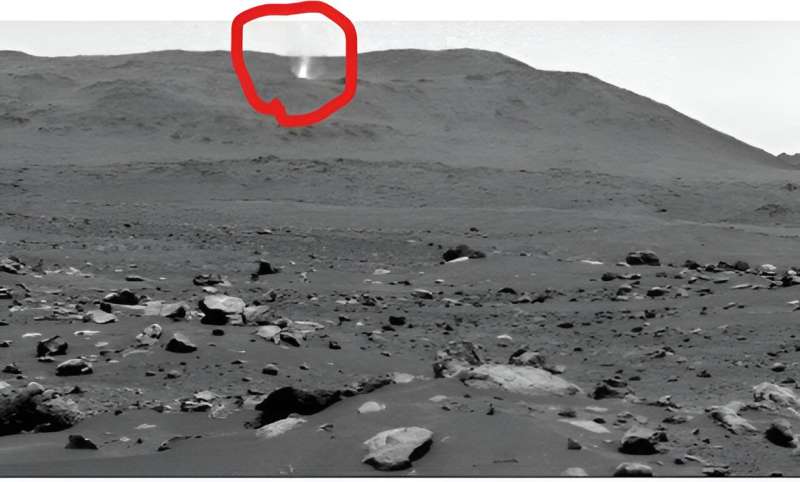
The lower portion of a Martian dust devil was captured moving along the western rim of Mars' Jezero Crater by NASA's Perseverance rover on Aug. 30, 2023, the 899th Martian day, or sol, of the mission. The video, which was sped up 20 times, is composed of 21 frames taken four seconds apart by one of the rover's Navcams.
Much weaker and generally smaller than Earth's tornadoes, dust devils are one of the mechanisms that move and redistribute dust around Mars. Scientists study them to better understand the Martian atmosphere and improve their weather models.
Using data from the imagery, mission scientists determined that this particular dust devil was about 2.5 miles (4 kilometers) away, at a location nicknamed "Thorofare Ridge," and moving east to west at about 12 mph (19 kph). They calculated its width to be about 200 feet (60 meters). And while only the bottom 387 feet (118 meters) of the swirling vortex are visible in the camera frame, the scientists could also estimate its full height.
Space Systems Command's TAP Lab to accelerate innovation in space domain awareness
 Space Systems Command (SSC), the United States Space Force (USSF) field command, has opened a Tools Applications and Processing (TAP) Lab in Colorado Springs to address critical challenges in space domain awareness. Designed with an open framework to encourage government, industry, academic, and allied collaboration, SSC's newest TAP Lab will engage external partners through Project Apollo, slat
Space Systems Command (SSC), the United States Space Force (USSF) field command, has opened a Tools Applications and Processing (TAP) Lab in Colorado Springs to address critical challenges in space domain awareness. Designed with an open framework to encourage government, industry, academic, and allied collaboration, SSC's newest TAP Lab will engage external partners through Project Apollo, slat Evergreen Innovations manages All-Domain Network at Northern Strike Exercise
 Evergreen Innovations LLC ("Evergreen"), a tactical communications integrator, reports it has successfully managed the All-Domain Network (ADN) during the Northern Strike 23-2 reserve component readiness exercise held July-August at the National All-Domain Warfighting Center, in Michigan.
Northern Strike 23-2, conducted under the auspices of the U.S. Department of Defense's National Guard
Evergreen Innovations LLC ("Evergreen"), a tactical communications integrator, reports it has successfully managed the All-Domain Network (ADN) during the Northern Strike 23-2 reserve component readiness exercise held July-August at the National All-Domain Warfighting Center, in Michigan.
Northern Strike 23-2, conducted under the auspices of the U.S. Department of Defense's National Guard Artel partners with Rivada for US Space Force contract
 Artel LLC a provider of secure network communication services to U.S. government agencies, has been awarded a Commercial Satellite Communications Proliferated Low Earth Orbit (p-LEO) contract from the U.S. Space Force and is partnering with Rivada Space Networks to provide the next generation network critical to support U.S. Government communications.
Based in the U.S, Artel is a carrier-a
Artel LLC a provider of secure network communication services to U.S. government agencies, has been awarded a Commercial Satellite Communications Proliferated Low Earth Orbit (p-LEO) contract from the U.S. Space Force and is partnering with Rivada Space Networks to provide the next generation network critical to support U.S. Government communications.
Based in the U.S, Artel is a carrier-a ANSRs to Hard AI Questions
 How can we build robust, assured, and therefore trustworthy AI-based systems? That question lies at the heart of DARPA's Assured Neuro Symbolic Learning and Reasoning (ANSR) program.
"Informally, trust is an expression of confidence in an autonomous system's ability to perform an underspecified task," said Dr. Alvaro Velasquez, DARPA's ANSR program manager. "Ensuring autonomous systems wil
How can we build robust, assured, and therefore trustworthy AI-based systems? That question lies at the heart of DARPA's Assured Neuro Symbolic Learning and Reasoning (ANSR) program.
"Informally, trust is an expression of confidence in an autonomous system's ability to perform an underspecified task," said Dr. Alvaro Velasquez, DARPA's ANSR program manager. "Ensuring autonomous systems wil Eutelsat investors approve OneWeb merger for satellite internet
 Shareholders of European satellite operator Eutelsat approved Thursday a $3.4 billion merger deal with Britain's OneWeb, with the new entity out to become a global broadband internet champion to rival the likes of Elon Musk's Starlink.
The approval came at an extraordinary general meeting for a partnership targeting sales of "some two billion euros ($2.1 billion) in 2027", equivalent to doub
Shareholders of European satellite operator Eutelsat approved Thursday a $3.4 billion merger deal with Britain's OneWeb, with the new entity out to become a global broadband internet champion to rival the likes of Elon Musk's Starlink.
The approval came at an extraordinary general meeting for a partnership targeting sales of "some two billion euros ($2.1 billion) in 2027", equivalent to doub Week in images: 25-29 September 2023
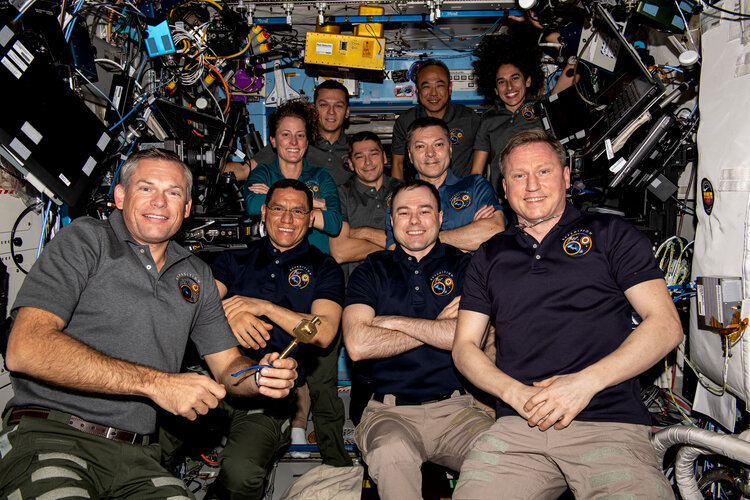
Week in images: 25-29 September 2023
Discover our week through the lens
Earth from Space: Southern Patagonian Ice Field
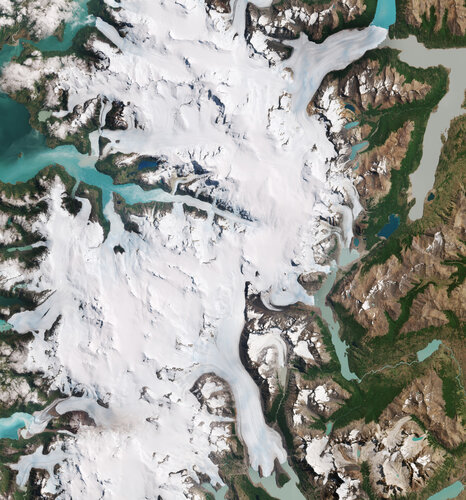 Image:
Part of the Southern Patagonian Ice Field with its white glaciers and aquamarine lakes is featured in this Copernicus Sentinel-2 image from 10 January 2023.
Image:
Part of the Southern Patagonian Ice Field with its white glaciers and aquamarine lakes is featured in this Copernicus Sentinel-2 image from 10 January 2023. India space chief unfazed by Moon mission's apparent end
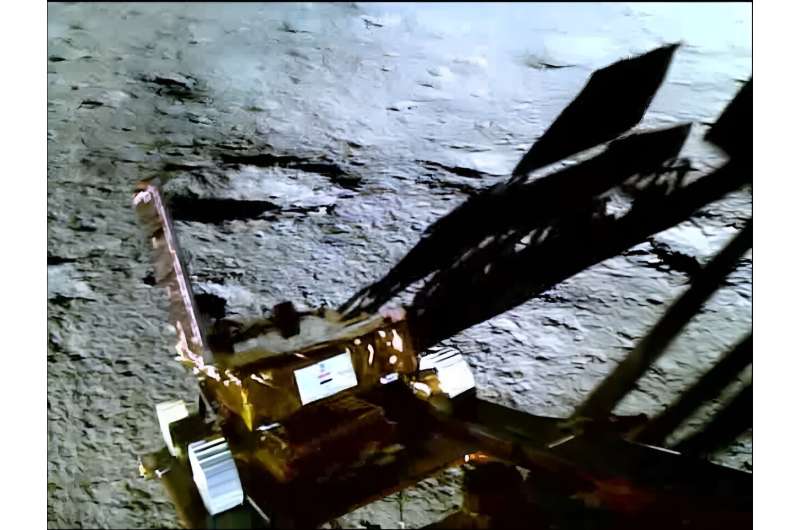
As hopes dim of further contact with India's moon rover, the country's space chief has said he was satisfied with the prospect of calling its successful lunar mission to an end.
India began exploring the moon's surface in August after becoming just the fourth nation to land a craft on the celestial body, sparking celebrations in a country rapidly closing in on milestones set by global space powers.
Rover Pragyan—"Wisdom" in Sanskrit—surveyed the vicinity of the moon's south pole but was powered down before the start of lunar night, which lasts roughly two weeks on Earth.
The Indian Space Research Agency had hoped to prolong the mission by reactivating the solar-powered vehicle once daylight returned to the lunar surface, but so far has been greeted by radio silence.
Ethics rules needed for human research on commercial spaceflights, panel says
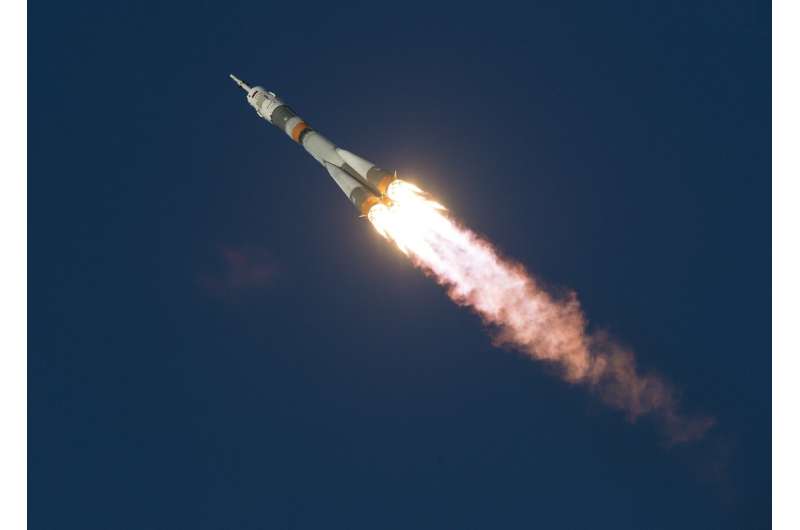
New guidelines are needed to assure that research on human subjects performed on commercial spaceflights is conducted ethically, a panel of experts say in a commentary appearing in the September 28 issue of the journal Science. Their paper is titled "Ethically cleared to launch?"
Private companies are expected to fly thousands of people into space in the coming decades. Those aboard will include workers and passengers who will have the opportunity to participate in research studies. Such research is not only essential to assure the safety of future space travelers but often also addresses critical issues of human health in general.
Buț current ethical rules used to govern research on human subjects do not directly address the unique circumstances of research aboard commercial spaceflights, according to a panel convened by Center for Medical Ethics and Health Policy, Baylor College of Medicine, Houston.
"There has been a long tradition of astronauts from NASA and other national space agencies of volunteering for research, and the agencies have established tradition on how this research is done," said Dr. Michael A.

